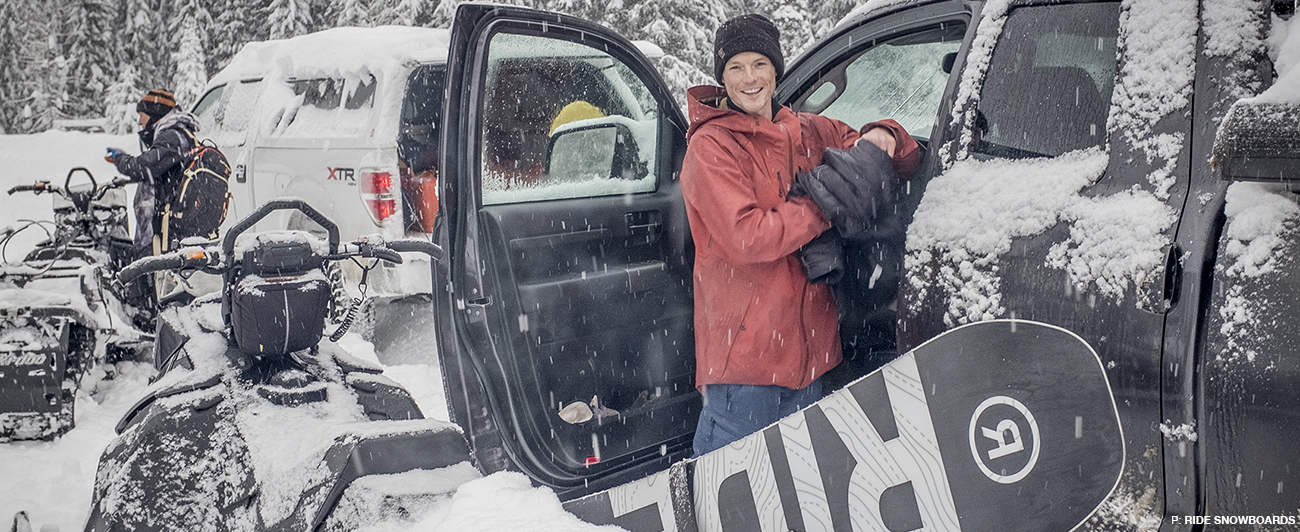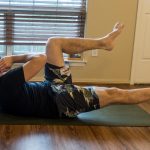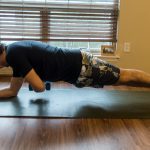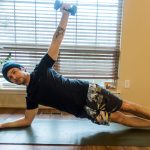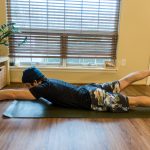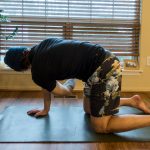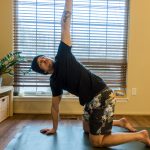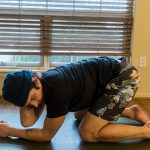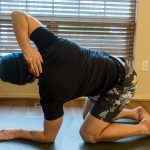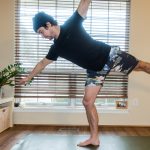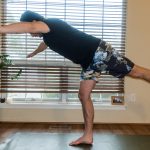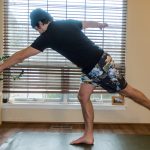Column
Dr. Jacqui, DPT
Jake Blauvelt is known for his smooth, natural style. He rides inventive lines and has an impressive bag of tricks, and says that maintaining core strength has made a key impact on his life as a professional snowboarder. “Strength training, and core strength training in particular, has made one of the largest impacts on my riding,” Blauvelt says. “When my core is strong I move as one unit without any tweaks up my spine or in my hips, and it allows for that split-second connection between your brain firing the thought and your body carrying out the action.”
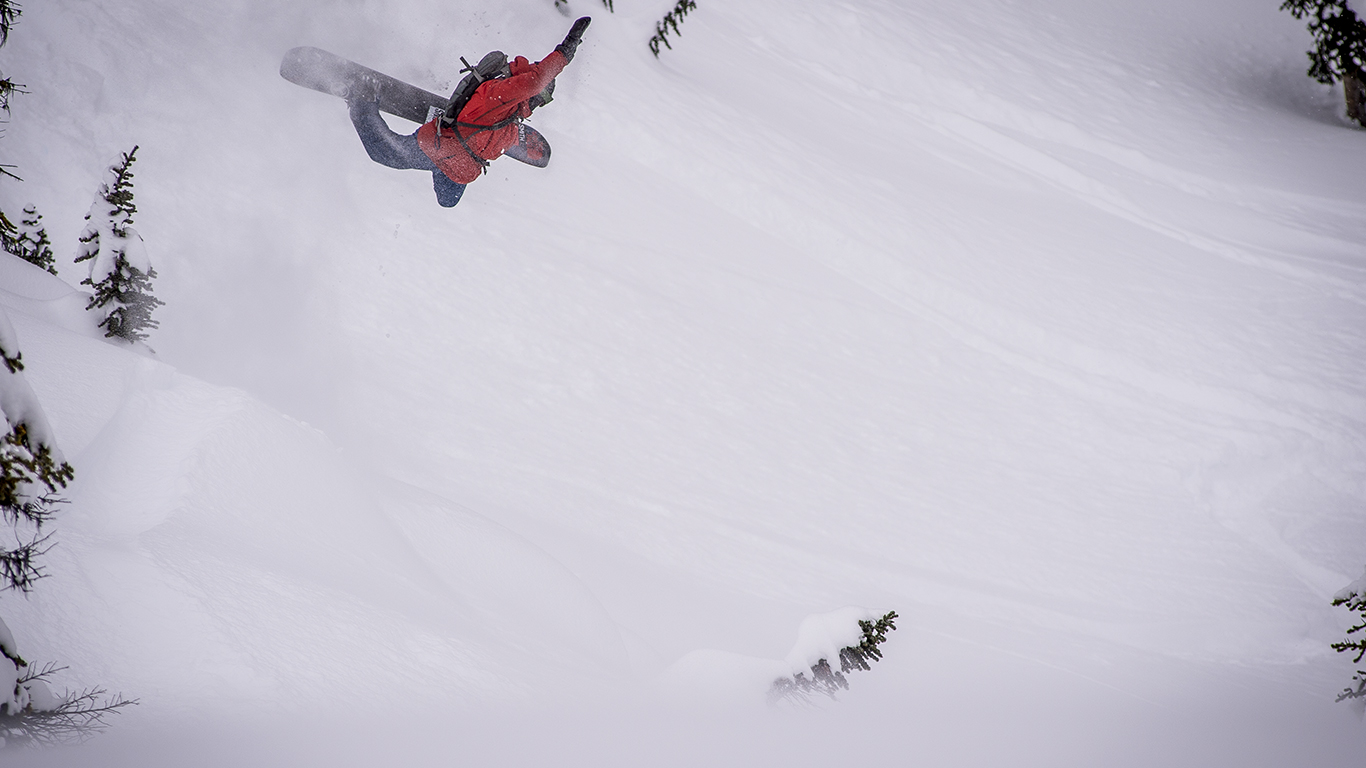
ABOVE Jake Blauvelt, firing thoughts and carrying out their resulting actions. Photo courtesy of Ride Snowboards.
Stability and control of the spine is important, not just in keeping us upright and doing the sports we love, but also for maintaining ideal spinal alignment and preventing injuries. It’s what allows us to coordinate physical feats such as tweaking grabs or spinning off jumps. Having a strong core will help you hike farther, ride longer, and come home healthy at the end of the day spent in the mountains.
Your core consists of a deeper, inner first layer that’s primary function is stabilization, and an outer layer of larger muscles that produce movements. The vital inner core is made up by the diaphragm (a.k.a “the roof”), transverse abdominis (TA), multifidi, and pelvic floor muscles. A stable, powerful core allows for quick muscle acceleration, deceleration, and stabilization as you drop down a pillow line or absorb an unexpected fall. “When my core is in tip top shape, I feel like I can tighten it up to keep my body from tweaking on impact from a fall,” Blauvelt says. “An in-shape core allows me to do the moves I want, and if the moves don’t go as planned, keeps me safe on hard impacts.”
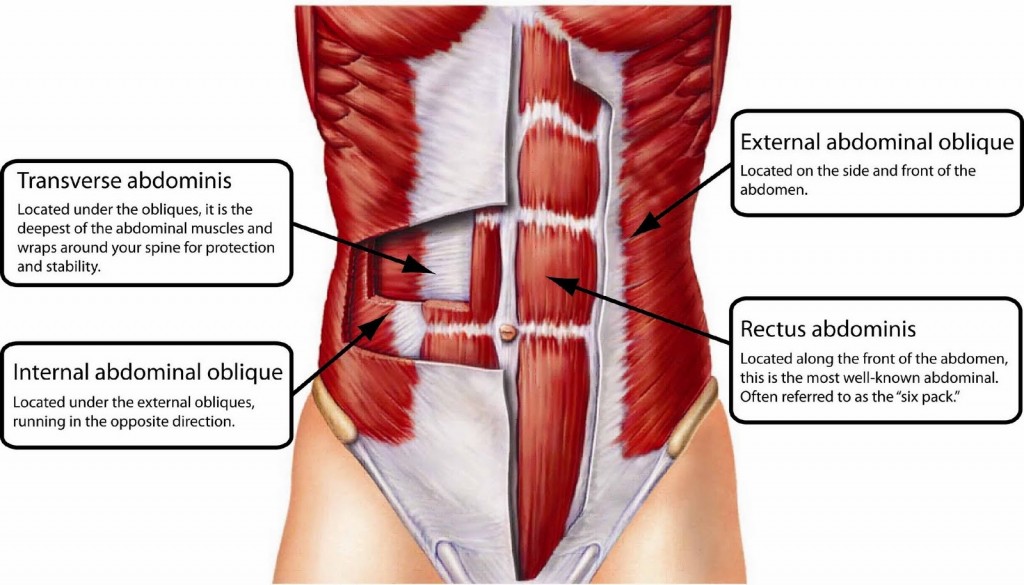
ABOVE The outer core consists of your back extensors, abdominal obliques and rectus abdominis, latissimus dorsi, quadratus lumborum and gluteus maximus. Photo courtesy of wikispaces user danceguadagno.
A couple years ago Blauvelt tweaked his back and suffered from a slight disc bulge in his lumbar spine. “I felt it right away, and for a solid four to six weeks afterwards I couldn’t snowboard without excruciating pain,” he says. Blauvelt took a solid month off to rehab his back with guidance from doctors, therapists, and a yoga instructor, all of whom emphasized the importance of targeting the inner core, using the diaphragm with belly breathing, and engaging the TA and pelvic floor muscles.
“During recovery, I focused on balancing deep core stability with flexibility through my legs and hips,” Blauvelt says. “It’s the kind of core stability that doesn’t necessarily form washboard abs, but helps protect your spine using the same muscle that engage when you stop yourself from peeing. I was basically doing Kegels, which doesn’t look like much from the outside, but was just what my body needed.” A Kegel exercise is the contracting and releasing of the pelvic floor muscles that can be utilized by both men and women to strengthen the pelvic floor and help maintain spine stability. After learning to engage and hold his inner core, Blauvelt says, “A switch had turned in my brain and I had found my deep core. It was something I was able to learn and take something away from my injury, rather than letting the injury take something from me.”
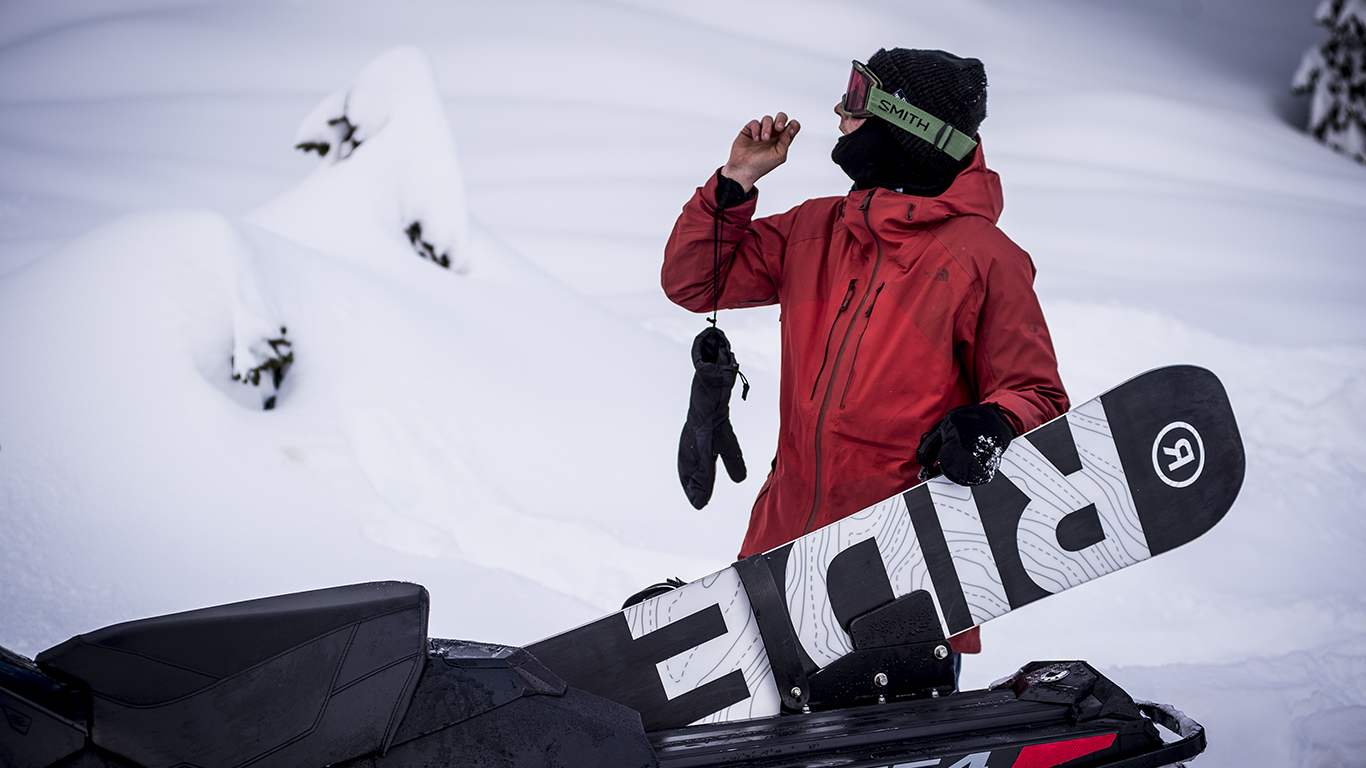
ABOVE Jake Blauvelt. Photo courtesy of Ride Snowboards.
The most common causes of back injuries are bending or twisting into awkward positions, especially with weight, as well as heavy lifting or other forceful movements. Joints in the spine and the connective tissues that hold them together can’t be strengthened individually, and rely on strong muscles to prevent forceful movement from pulling or jamming forces that can injure sensitive structures. If an individual segment of the spine is unstable, whether from weakness or tissue laxity, impacts or compressive loading may lead to, or perpetuate, a painful problem–whether from a tweak, fall, or just overuse. In snowboarding our spines are regularly in a bent and twisted position. We’re constantly spinning, turning, and tumbling, and are at risk of frequent low back injuries, including muscles strains, facet joint or ligament sprains, herniated discs, and referred pain into the hips and leg from irritation in the lumbar spine. After any injury, it’s essential to strengthen your inner and outer core to get back to your previous level of function.
ABOVE “I like super subtle and dynamic core exercises that fire the core from its deepest part,” Blauvelt says. “This is one exercise I do pretty religiously to get everything woken up, especially the connection between a thought in your brain and split second connection to your muscles.”
Because snowboarding contorts the spine into various combined motions of twisted and bent positions, incorporating exercises that utilize the spines surrounding muscles in similar ways is crucial for performance. Train your inner core with deep sumo squats, Kegels, belly breathing, and abdominal bracing (drawing the belly button towards the spine), and incorporate the deep, inner core contraction with your bigger, harder exercises.
Practice explosive movements using resistance and varied speeds for combined motions of trunk rotation, flexion and extension, such as throwing a weighted ball sideways for quick reversals of motion to help your spinning, or throwing the ball vertically against a wall and catching it in a squat position to train your core to stabilize in varied riding positions while building power. Build endurance with high reps or sustained holds to prevent fatigue while riding, and add regular hip mobility and strengthening to maintain the overall health of your core complex, consisting of your spine, pelvis, and hips.
Check out this gallery of Brendan Keenan performing a few exercises that can help strengthen up your core and back muscles:
Shoveling is another prominent way people injure their back. Whether you’re digging a snow pit before heading into the backcountry, building a jump or shoveling your driveway, focus on bending at your knees and lifting with your legs rather than your back. Use a shovel handle long enough to keep your back straight while lifting, and try and avoid rotation or twisting when throwing the snow. Take frequent breaks to stand up straight and walk about, with a few backward bends to counter the excessive forward bending.
If you do injure your back, there are a few steps you can take to cope with the injury. Use ice the first two days to prevent swelling, muscle spasms, and pain. After the first two days switch to heat to help relax sore tissues. Take it easy to let your back recover. If the pain doesn’t subside within a few days, or if it worsens, feels sharp, or starts hurting in your hips and/or legs, go to see a healthcare provider, especially if you get any leg weakness or numbness.
Blauvelt says, “Do some kind of deep core conditioning every day. It should only take 5 minutes, and will keep the connection between your brain and muscles sharp. In turn, it will keep you protected and confident.”
Dr. Jacqui Berg grew up riding Mt. Baker and The Summit at Snoqualmie in the 90s before going on to snowboard at a professional level, competing in Big Air and Slopestyle events and filming video parts with Misschief and Runway Films. Jacqui developed an intrigue with sports performance, rehabilitation and injury prevention, which led her to pursuing a Bachelor’s in kinesiology at Western Washington University and then a Doctorate of Physical Therapy from the University of Washington. After graduating with honors, she moved to Bellingham, WA where she practices physical therapy with a focus on sport specific therapy and injury prevention.
Disclaimer: The contents of “Jacqui Berg, DPT,” such as text, graphics, images, and other material, are not intended as a substitute for care from a physical therapist or health care professional. If you experience signs or symptoms of an injury or other medical condition, you should seek the advice of a qualified health provider with any questions or concerns. Use the advice here at your own discretion and risk.
